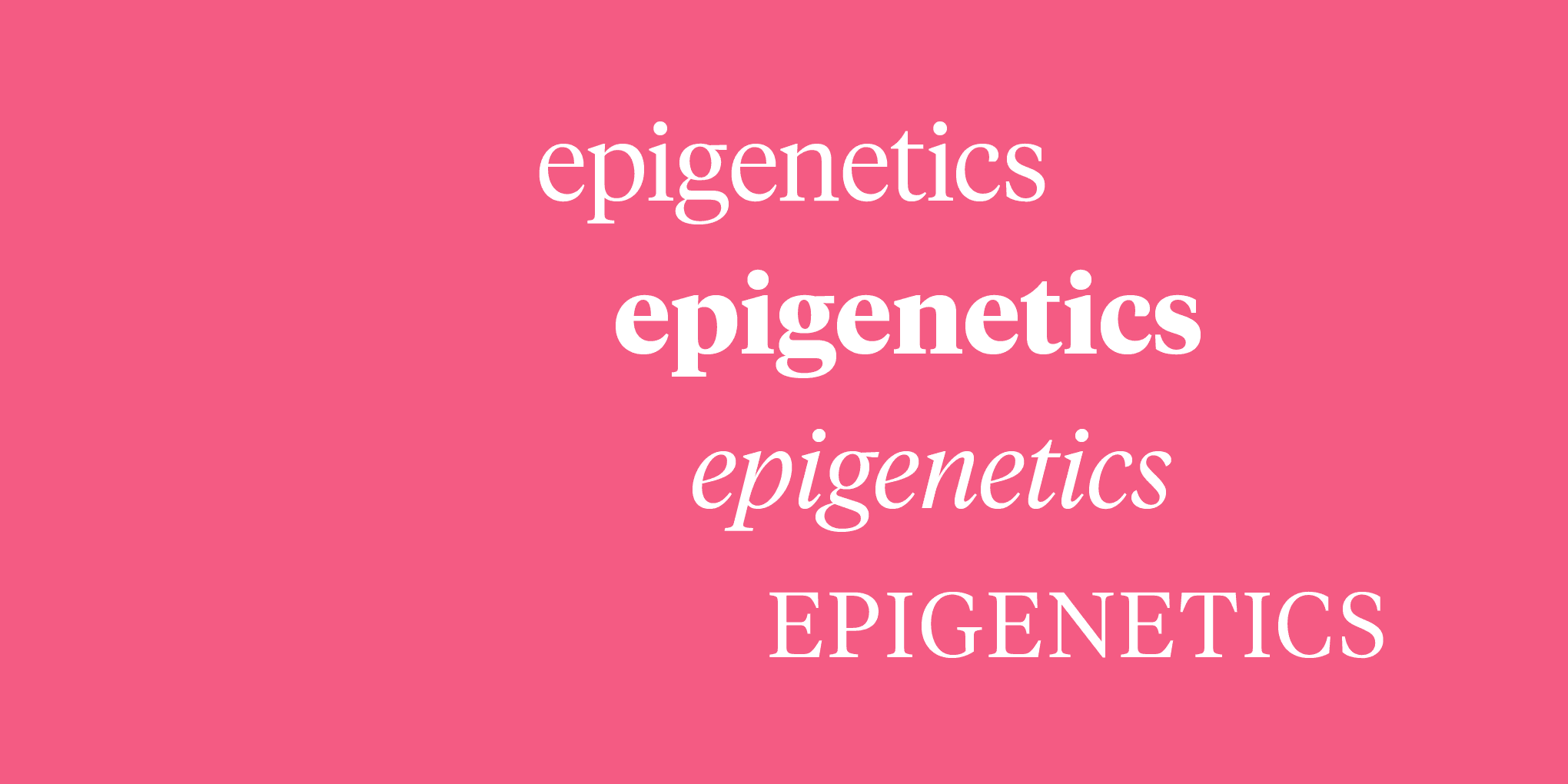Epigenetics: Reading between the lines of your DNA

Have you ever accidentally sent a message in ALL CAPS? Or did you ever use the wrong punctuation at the end of a sentence! It’s times like these where you see that there is more to writing than simply spelling something correctly; there’s almost a second language hidden in the way text is formatted. This second language can add context to what’s being said, emphasize certain words appropriately, and set the proper tone. In the same way text formatting is important to the way we read, there’s a type of formatting that’s important to the way your genome is used.
Does your DNA change over time? Broadly speaking, there are two categories of cells in your body: germ cells and somatic cells. Germ cells refers to the cells that become a sperm or an egg; somatic cells are everything else.
Changes to the DNA can occur in any of your cells, but most times these changes don’t impact an important function, and even less often do they change something in your germ cells that would impact an important function in your children. Only changes to the DNA within your germ cells can be passed onto future generations. This means, for example, that a spontaneous mutation in your skin will not be passed onto your children.
There’s a whole system of proteins and chemical tags that affect how the DNA is read without changing the DNA sequence. The example of text formatting is a good way to think about it—if you italicize a word, or make it bold, you haven’t actually changed how the word is spelled, but you have changed the way it will be read. Similarly, these proteins and modifications control the way DNA is read by the body. This shapes how our cells establish and maintain their identity (e.g., how a skin cell knows it’s a skin cell) and how our body responds to environmental inputs like nutrients from food. What’s really interesting, though, is that some of these marks are maintained as cells divide to produce more cells, and some are even passed onto future generations! We call this type of biological information epigenetics.
The addition of DNA formatting through epigenetic marks is a dynamic process that even appears to happen in response to certain environmental cues, like stress or famine. These modifications can sometimes be passed onto future generations, a phenomenon known as transgenerational epigenetics. A classic example of this was presented in 2002, where researchers found evidence suggesting that men who experienced famine in the early 1900s may have undergone epigenetic changes that influenced their metabolism. This wasn’t very surprising, but what was surprising was that the researchers found these changes may have been passed onto their children—and grandchildren—which decreased their risks of developing certain diseases. Further research is needed to confirm and understand a provocative discovery like this because it’s not clear yet how famine impacted epigenetic marks, or how those marks were passed on over multiple generations. Nonetheless, it’s a fascinating observation that sparked a lot of interest in the topic.
So what does all of this mean for you? It doesn’t mean that if you go to yoga classes on a regular basis, you can influence how flexible your future children will be, or that you should worry a cheeseburger for lunch yesterday might have some effect on your grandchildren. It means that the language of life is more complex than we once thought. Rather than being plain text, your DNA has multiple layers of formatting and extra information on it that help write the story of you. That said, there is no doubt that the actual sequence of DNA is the primary way in which biological information is passed from parents to their children, and it is clear from very robust research that the sequence of our DNA can have an influence over many of our traits. But we’ve also known for a long time that the sequence of DNA you inherit is just one piece of a larger puzzle, and that epigenetics can be another piece.
Categories